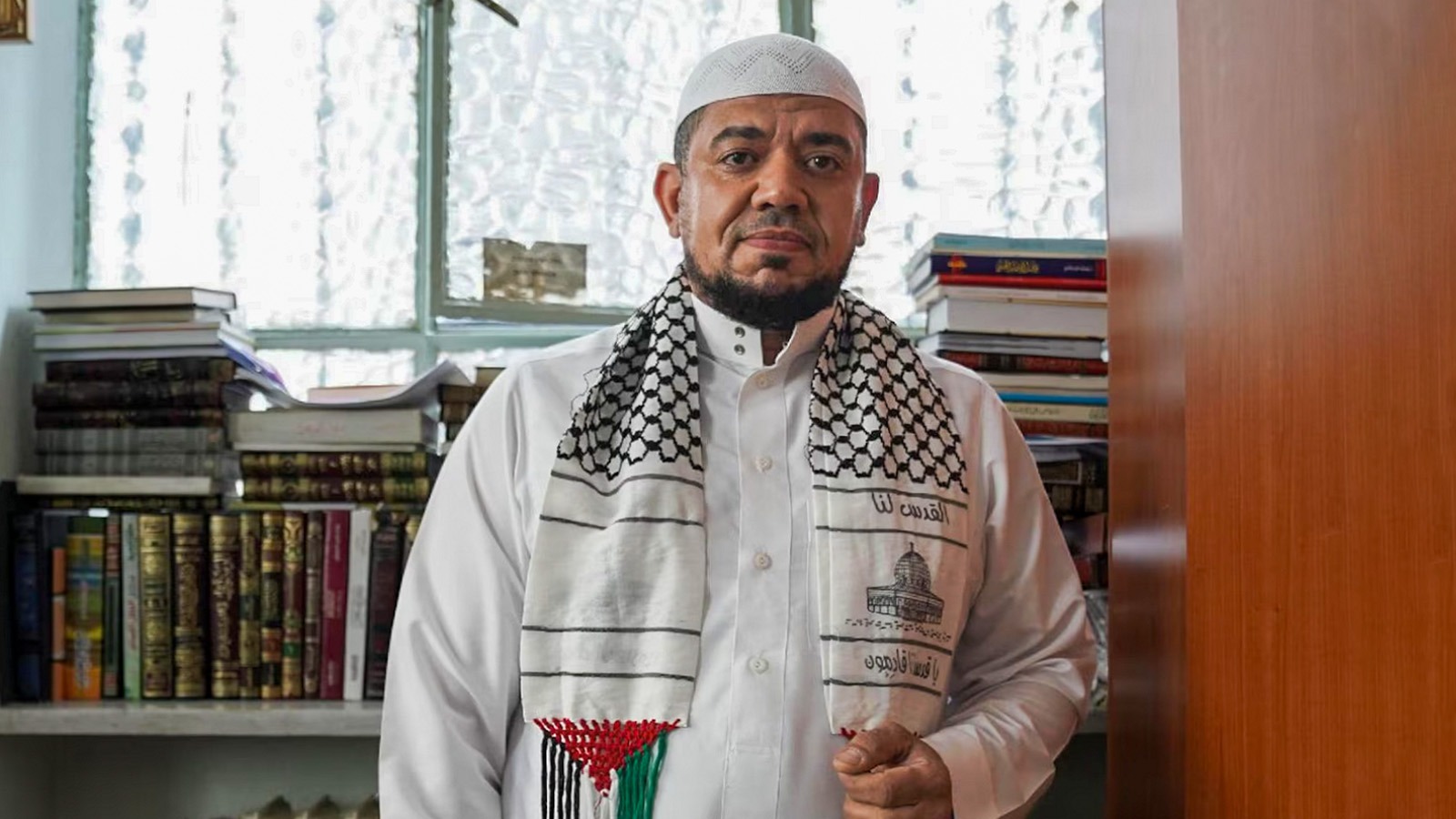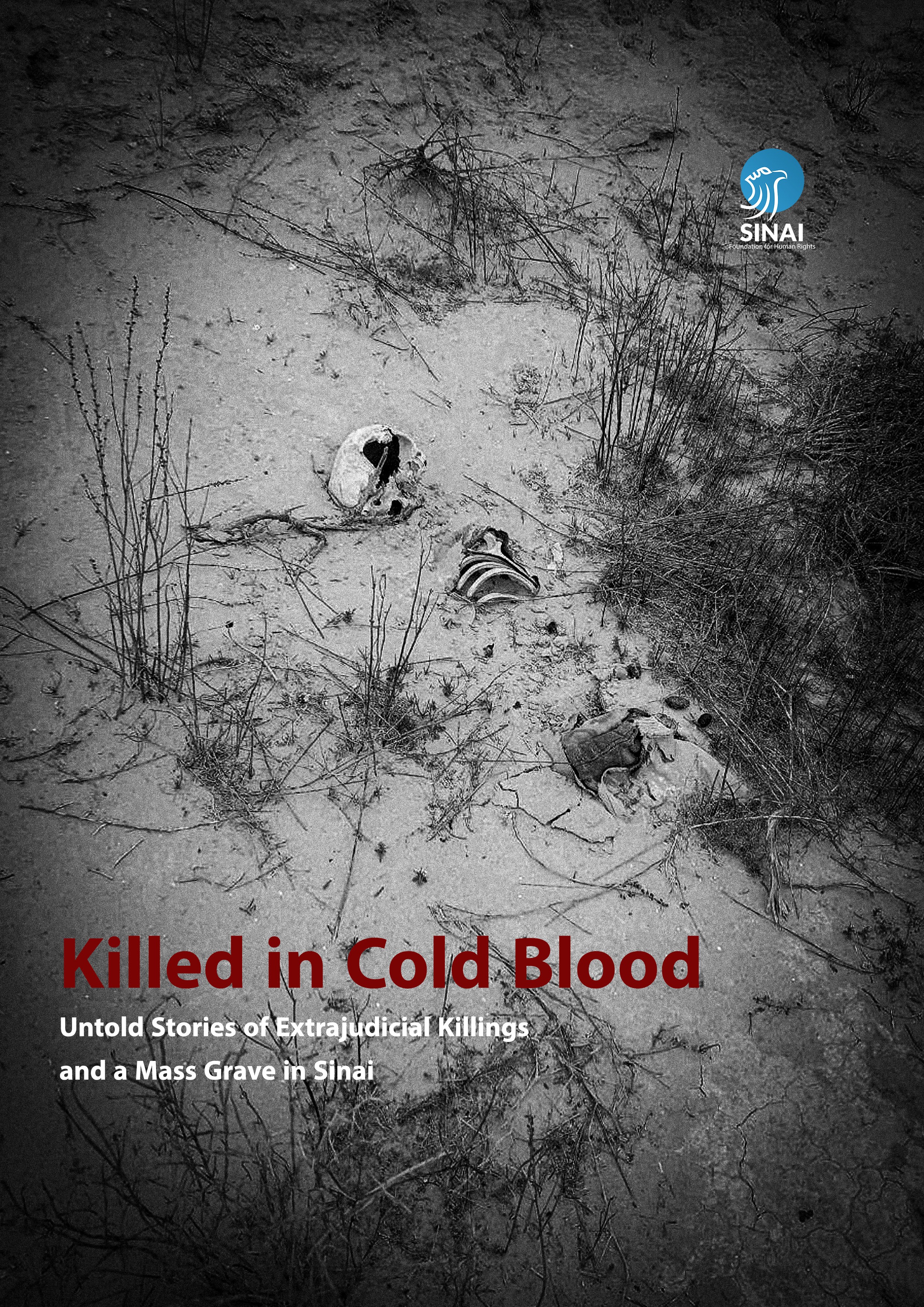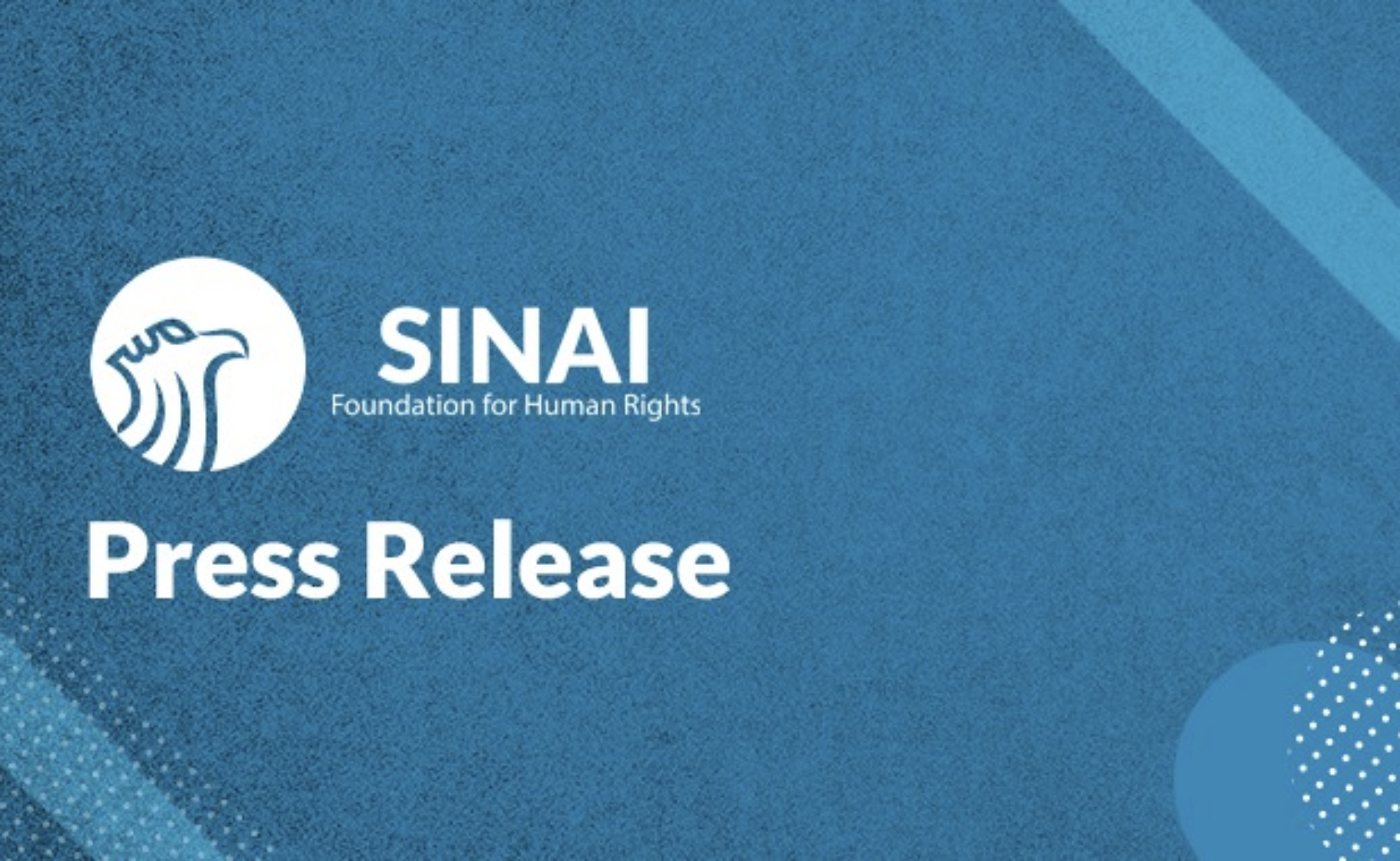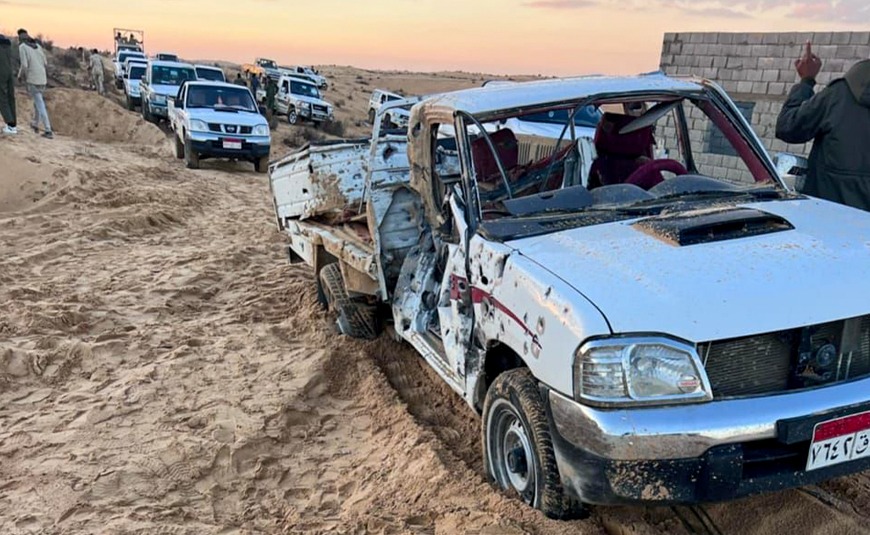
New Evidence on the Killing of an Egyptian Youth in an Israeli Airstrike Inside Egyptian Territory
The Sinai Foundation for Human Rights has uncovered additional rigorous evidence substantiating its earlier findings, disclosed last Tuesday, regarding the death of 18-year-old Jihad Youssef Abu Aqleh. The incident occurred on the afternoon of Saturday, December 21, 2024, as a result of an Israeli airstrike carried out by an F-16I Sufa fighter aircraft, pursuing a Houthi drone in the Al-Ajraa area, south of Rafah. However, a missile fired during the operation missed its target and detonated near the vehicle in which Jihad was traveling. The explosion's shrapnel caused his death and mutilated his body.
The Egyptian authorities have failed to take any substantive action to investigate the incident. Jihad Abu Aqleh was buried without an autopsy, a formal investigation, or the issuance of a death certificate, in what appears to be deliberate governmental obfuscation. Six days after the incident, both the Egyptian and Israeli governments remain silent, providing no official statement to clarify the circumstances. Simultaneously, the Sinai Foundation for Human Rights and its staff have been targeted by a coordinated online smear campaign, most likely driven by accounts affiliated with the Egyptian government.
As part of its investigation, the Sinai Foundation for Human Rights obtained exclusive footage of the Israeli fighter jet operating within Egyptian airspace. The foundation’s Digital Investigations Lab analyzed the footage, using open-source satellite imagery to accurately geolocate the jet’s flight path by cross-referencing visible landmarks, such as houses and trees, from the video. Additionally, the foundation conducted a field visit to the incident theater, gathering physical evidence, including missile fragments and parts of the vehicle that was partially destroyed in the strike, resulting in the death of Jihad Abu Aqleh. For the first time, the foundation is sharing a personal photograph of the victim and images of his vehicle both before and after the attack. It is also publishing audio testimonies from an eyewitness and a family member of the deceased.
A video illustrating the evidence gathered by the foundation as part of its investigation
The Digital Investigations Lab at the Sinai Foundation was able to geolocate the Israeli missile strike at the following coordinates, [31° 2'40.80"N 34°18'1.38"E] . This location is situated in the Al-Ajra area, south of Rafah, and is approximately 2.7 kilometers from the international border between Egypt and Israel. The missile caused a crater in the ground and scattered metal fragments, coated in white paint, which were identified as parts of the victim's vehicle. This vehicle color matches that of the car driven by Jihad, as shown in the images obtained by the foundation.


An image of the victim's vehicle before and after the attack
The lab also managed to identify the serial number engraved on a fragment of the missile debris and conducted a search through an open source military database. The investigation confirmed that the missile was manufactured in the United States.

An image verifying the match between the serial number engraved on the missile debris and a military database confirms that the missile was manufactured in the United States.
The Sinai Foundation for Human Rights shared images of the missile debris with a military expert specializing in combat aviation. In an interview with the foundation, the expert confirmed that the missile is a US-made AIM-9, classified as an air-to-air missile. This aligns with the theory that the missile was not necessarily targeting the victim’s vehicle but rather aimed at another aerial target, which it missed before falling near Abu Aqla’s car.
The expert further explained that the missile is equipped with a guidance wing and a "rolleron" mechanism to prevent deviation, making it one of the types of missiles used to arm F-16I Sufa aircraft, which appear in the recorded footage. He also noted that the U.S. Department of Defense database indicates that Israel has received shipments of AIM-9 missiles multiple times over the past several years, confirming its possession of this type of missile.

An archival image of a US AIM-9 missile compared to the debris of the missile that struck the victim.
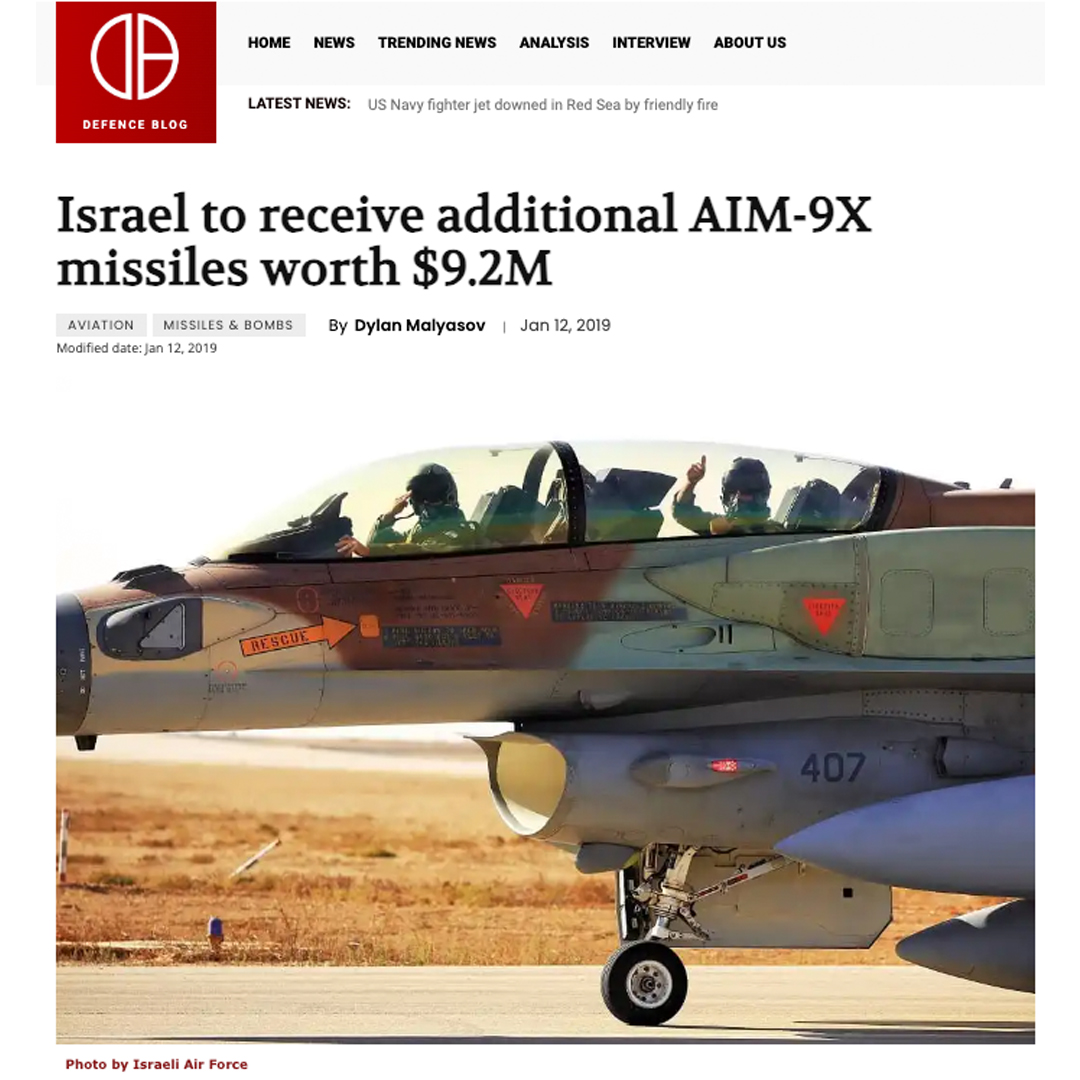
The same military expert had previously confirmed to the Sinai Foundation, during an earlier interview, that the aircraft involved in the attack belonged to the Israeli Defense Forces (IDF) and not the Egyptian military, based on several technical details. He pointed out that F-16I Sufa aircraft are uniquely camouflaged with a desert scheme designed to blend into the operational environment of arid regions, making them less detectable at low altitudes. This camouflage typically consists of beige and light brown tones, a design exclusive to the Israeli Air Force and not used by the Egyptian Air Force. The same camouflage pattern was observed on the aircraft in the images obtained by the foundation.
The expert further explained that the F-16I Sufa is a modified version of the American F-16, customized specifically to meet Israel’s operational needs. He noted that the aircraft in the images features distinctive external fuel tanks, known as Conformal Fuel Tanks (CFTs), which are one of the key modifications distinguishing the F-16I Sufa. These tanks are specifically designed to support long-range operations conducted by the Israeli Air Force.

An image showing some distinctive landmarks in the Al-Ajra and Al-Barth areas, inside Egyptian territory, which appeared in the video of an Israeli F16 i Sufa pursuing a Houthi drone
To listen to part of an interview with one of the victim's relatives conducted by the Sinai Foundation:
*** Some words in the testimony have been withheld to protect the identity of the guest for their safety.
"The drone, the one from Yemen. The war jet was targeting the drone and ended up hitting the boy in the car. He was martyred instantly, died right away. The missile hit the car, and he was gone instantly. He didn’t go to the hospital; we buried him right away. No one issued a death certificate because we buried him immediately—no one went to the hospital. He’s my relative; he’s not a stranger to me. His father is ***. He was only 18 years old, still so young. Really, just a kid, and such a respectable young man. It was the Jews who hit him, not the Egyptians. The Jews fired the missile, and after that, they went back to their position—they returned to Israel, yes."
To listen to part of an interview with an eyewitness conducted by the Sinai Foundation:
"Regarding the martyr Jihad Abu Aqla, as for the strike or any inquiries about it, I was there all the time. It was the Israeli military aircraft, they were chasing a drone, an unmanned aircraft, and while chasing it, Jihad Abu Aqla was driving on the road, in what is considered a small village. The missile hit, and this missile was likely a heat-seeking one. It continued and struck near the car, not directly on it, but close by, and the shrapnel hit the car."
The foundation learned from related sources that the victim's family is still facing security pressures to remain silent about the incident. These pressures intensified after the news of Jihad's death spread, forcing the family to cancel the mourning ceremony. The most significant of these pressures include threats of exhuming the victim's body for an autopsy instead of allowing immediate inspection after death and granting permission for burial. This creates an additional emotional burden on the family, as it goes against the cultural values and norms of much of the local community. Additionally, there have been threats to confiscate the car that was heavily damaged in the attack and to punish anyone who speaks to any media or human rights organizations.
Residents of Sinai have long reported repeated Israeli border violations. Since the start of the war on Gaza in October 2023, the area has seen intensified Israeli military activity, often resulting in injuries and fatalities. On October 22, 2023, for instance, the Israeli army admitted to accidentally striking an Egyptian military post near the border, injuring Egyptian soldiers. The same day, an Israeli aircraft downed a Yemeni drone near Nuweiba in southern Sinai. On May 27, 2024, Israeli soldiers fired on Egyptian troops, killing at least one soldier.
The Sinai Foundation stated that the killing of Abu Aqla is part of a broader pattern of Israeli violations, stemming from the usual arrogance of the Israeli military forces, who have been violating basic human rights and the laws of war in Gaza for over a year with impunity. During this period, Israeli forces have committed crimes against humanity and genocide, while preventing humanitarian aid from reaching hundreds of thousands of residents. While it is understandable that Israel would not investigate the killing of an Egyptian civilian on Egyptian soil amidst the ongoing conflict, the foundation argues that the Egyptian authorities should open a transparent and independent investigation. The authorities should also provide appropriate compensation to the victim's family and ensure the public's right to know the truth by announcing the investigation's findings and the actions taken to protect civilians and prevent such attacks in the future.
Tags
Related Postes
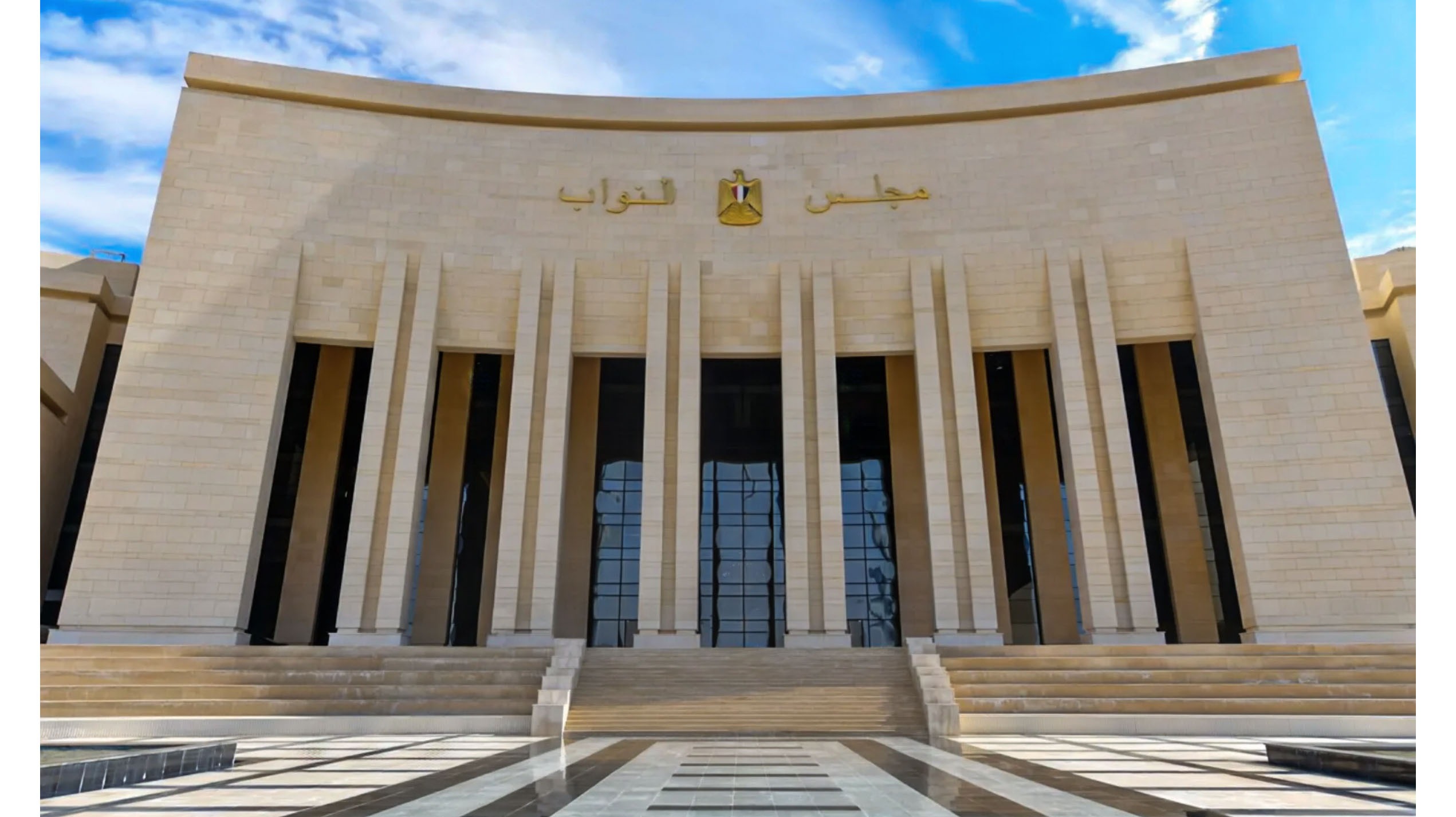 English content
English content

